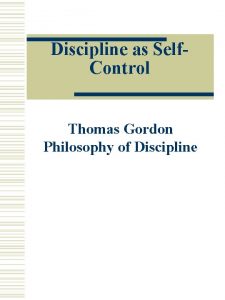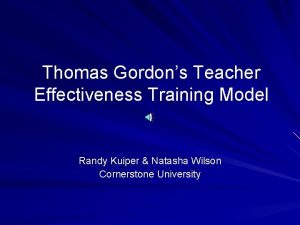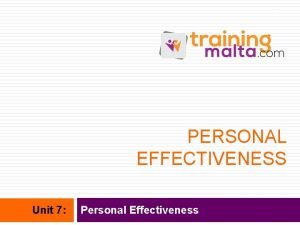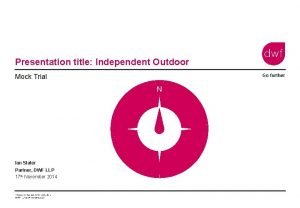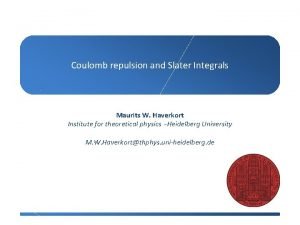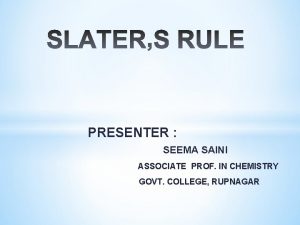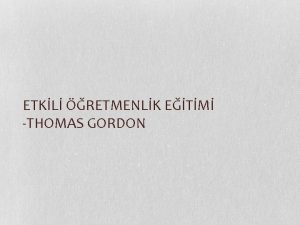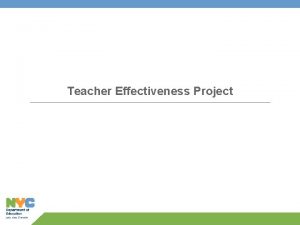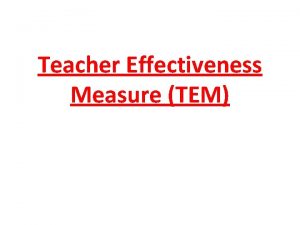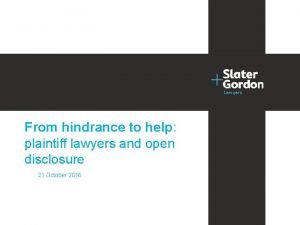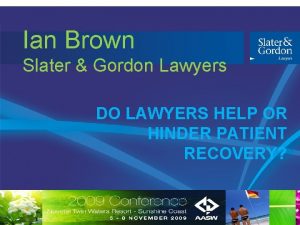Thomas Gordon Teacher Effectiveness Training Ashley Slater Mary









- Slides: 9

Thomas Gordon Teacher Effectiveness Training Ashley Slater, Mary Krevonick, Hannah Chong, Jason Beasley

Introduction Teacher Effectiveness Training “Do you want to maximize teaching/learning time? ”

Founder Thomas Gordon 1918 -2002 American Licensed clinical psychologist Most known for his programs: Teacher Effectiveness Training & Parent Effectiveness Training ★ Three time nominee for a Nobel Peace Prize ★ Recipient of the 2000 Lifetime Achievement Award from the California Psychological Association ★ Fun Fact: He served in the Army Air Force 19421946 ★ ★

Degree of Teacher Control ● Low ● When a student has a problem, the role of the teacher is to: - Critically listen - Use door openers like, “Can you tell me more about that? - Mirror the child’s concerns or messages by actively listening

Degree of Student Control ● High ● Since the teacher guides the student to recognize what the solution is ● Students regulate their own behavior. ● Open ended discussions stems from self-regulation.

Beliefs About Students ● Students are self-regulating human-beings. ● Own behavior through selfregulation. ● If we work with students and listen to them then they will be able to self-solve problems.

Main Ideas and Philosophy ● The better the student-teacher relationship, the better student behavior and engagement ● Open communication between teacher and students ● Allows children to learn how to take responsibility/ ownership for their behavior ● Wants students to become self-reliant without using rewards or punishment

Approaches used by Teachers ● If there is a problem, teachers use active listening to reveal the feelings behind the reason the student misbehaved. ● Use of “I” messages to convey how they feel ● Open ended questions ● Role-play

References - Gordon, T. , & Burch, N. (2003). Teacher effectiveness training: The program proven to help teachers bring out the best in students of all ages. New York: Three Rivers Press. Teacher Effectiveness Training (T. E. T. ). (n. d. ). Retrieved January 19, 2015, from http: //www. gordontraining. com/school-programs/teacher-effectiveness-training-t-e-t/ T. E. T. (n. d. ). Retrieved January 21, 2015, from http: //www. metu. edu. tr/~e 133376/project/tet. htm
